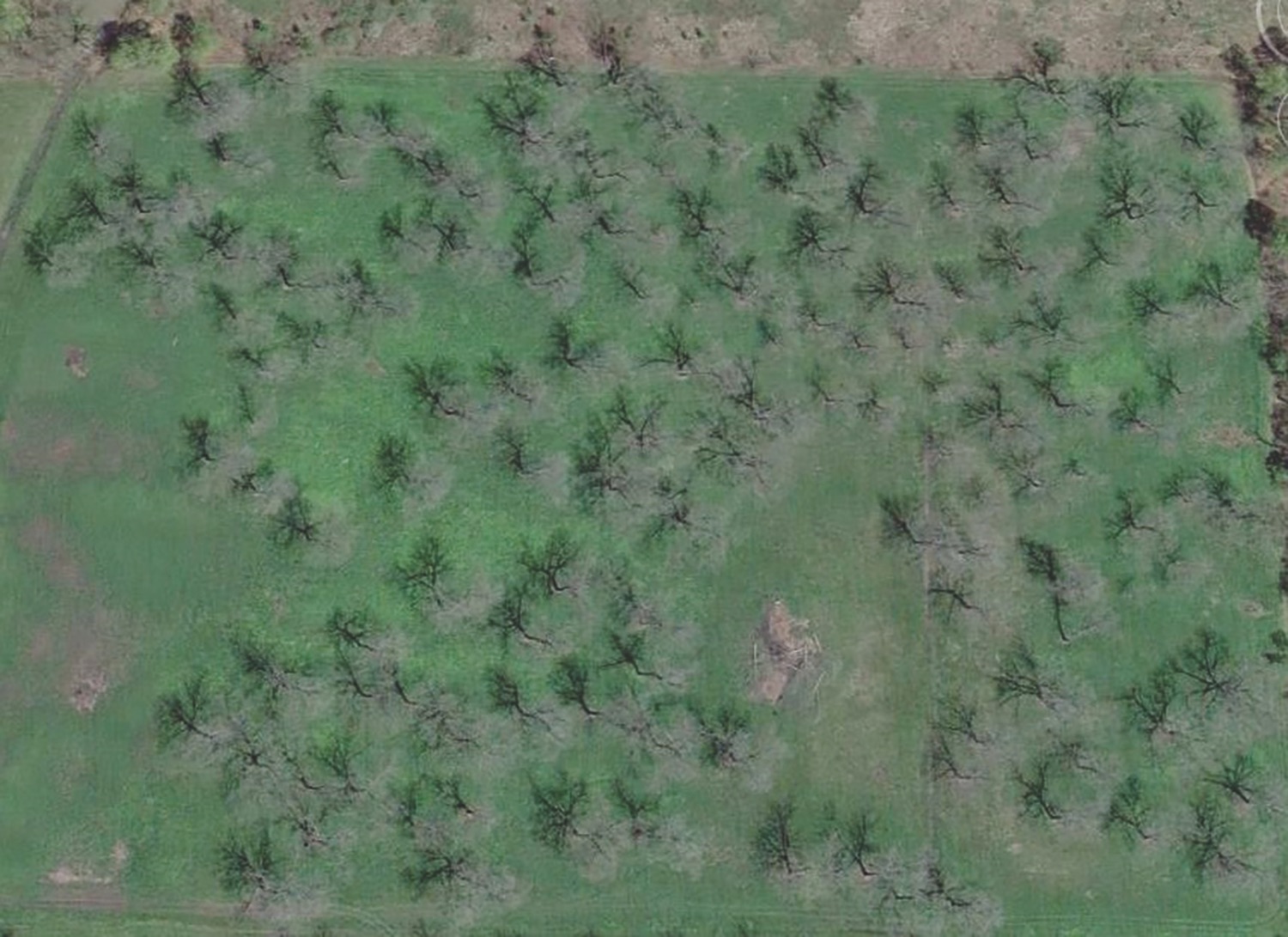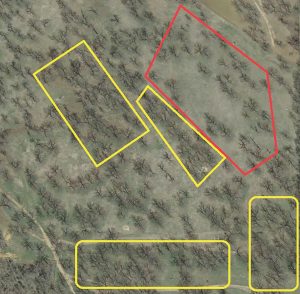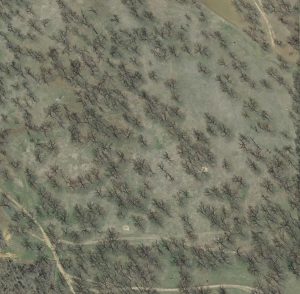Tools to help determine a thinning plan

Native pecan grove that is well spaced and very productive. (Photo by Charles Rohla)
Sometimes this difficulty arises from an emotional connection to a tree and other times it can be the perceived loss of return if the tree is removed. Many of the producers that I have worked with that do consider thinning out trees, do not begin thinking about creating a plan until post-harvest. However, this is not the optimal time to begin evaluating the grove. A game plan for tree removal should be established prior to this time.
An ideal situation would be evaluating the grove in July when a full canopy is present and the site can be evaluated properly against available sunlight. In a native grove, deciding on which trees to cull is not as simple as making selections in a planted orchard, where a producer simply removes every other tree in the row. Also, in a planted orchard cultivars are known, whereas in a native grove each tree is a different variety and no two trees are the same.
The question I am most often asked by producers is: If you have already gone through the grove and thinned out the damaged and unproductive trees, how can you tell if it is time to thin more? Typically, I recommend that the grove floor receive at least 50 percent sunlight at noon in July. However, this can be challenging to determine in a native grove where trees are not evenly spaced.
Groves often have a large group of trees in one area followed by an open area without any trees making it difficult to determine the percent of sunlight actually reaching the ground. Nonetheless, being in the grove during July to evaluate the percent of sunlight or percent of shade is still the best way to determine thinning needs.
An additional tool that can be useful in developing a plan is aerial maps. There are several different programs that a grower can use that have satellite images available for free on the internet. The two applications that I most commonly use are Google Earth on my desktop and ArcGIS on my smartphone. A desktop version of ArcGIS is available for a fee. Satellite images on these sites are extremely helpful when evaluating areas that may need attention. One caveat to satellite image use is the timing of image capture. Some imagery is captured when trees are fully leafed out while others may be taken when there are no leaves on the tree.
In the image at the top of this article, you can see a native grove that has been properly thinned and well-managed. This grove has great production and is easily harvested. The second photo shows a native grove more typical of what I see, and notice that there are many areas that need to be thinned out. The grove in the first photo is about 3 to 4 times more productive than this grove in the second photo. A large portion of the increase in production is due to tree spacing and increased sunlight.

Outlined areas of the second photo that should be addressed in a thinning plan. The red outlined areas have good spacing, while yellow outlined areas are too crowded and require tree removal for increased production. (Photo by Charles Rohla)
As you can see in this last photo, the red outlined area looks to be spaced pretty well as compared to the areas outlined in yellow. For proper management, the site outlined in yellow should be evaluated and a plan of action should be developed.
I fully understand that making the call to remove large trees is a difficult decision, but if you are a pecan producer focused on maximum return, tree removal is a decision that has to be made. Some plans will be longer than others and plans may require a significant variance in removal rate per orchard. The only caveat is realizing that a tree removal plan is not a one-time activity, but an ongoing management strategy that has to be evaluated each year.


